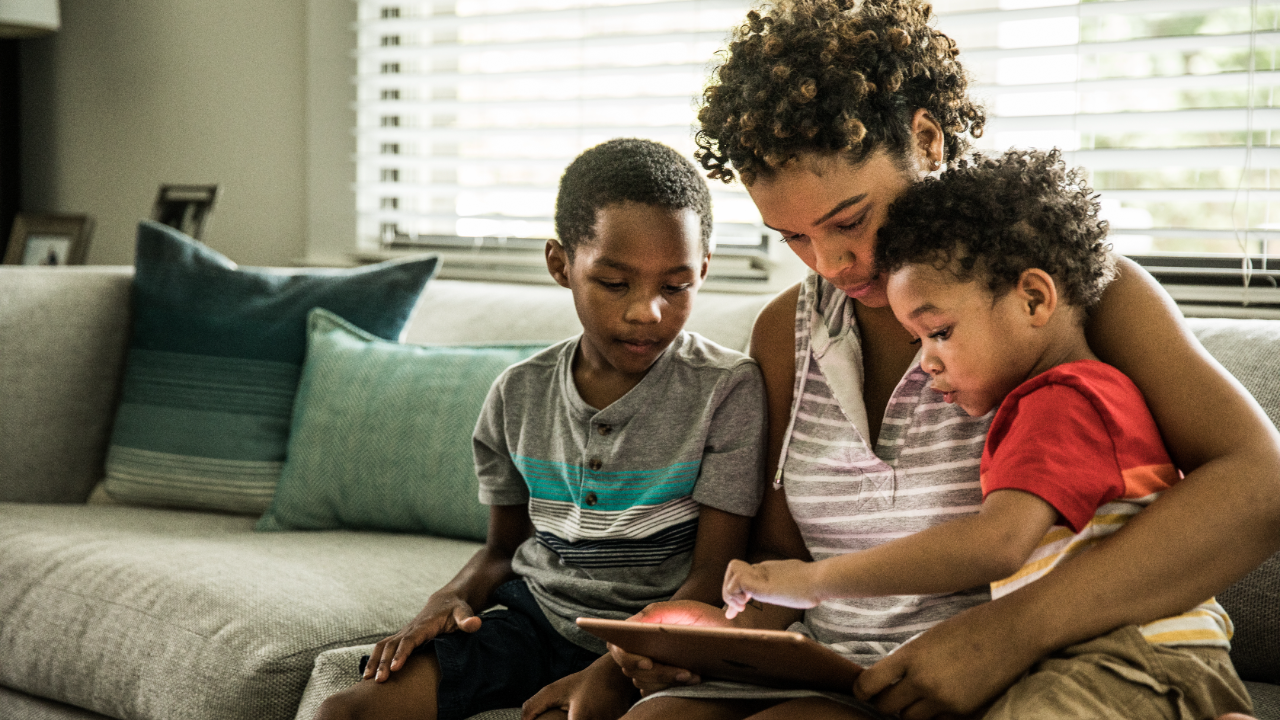SBA loan statistics: Race and gender

Key takeaways
- For the 2023 fiscal year, the SBA issued nearly $34 billion to business owners across the U.S.
- Only around a third of those loans went to businesses with female ownership
- Despite the fact that more than 13 percent of people in the U.S. are Black, only 8 percent of 7(a) loans and 3.6 percent of 504 loans went to Black applicants
- Although 19 percent of people in the U.S. are Hispanic/Latino, Hispanic/Latino business owners only received 8.5 percent of the money distributed from 7(a) loans and 10.3 percent of 504 loans
It’s in the best interest of the federal government to see businesses succeed. So in an effort to help, it offers loans backed by the Small Business Administration (SBA). These give the lender a safety net, knowing that if the borrower defaults, the SBA can help them recoup some of the losses. As a result, lenders might offer an SBA loan to a business owners they otherwise wouldn’t finance.
And this is a big boon to business owners across the U.S. The most current SBA lending report data shows that between the SBA’s 7(a) and 504 loan programs, more than 63,000 loans were issued in the 2023 fiscal year, with proceeds totaling just shy of $34 billion.
The problem? If you dig into how these business loans are distributed by race and gender, you see some notable disparities. The data shows that SBA loans for minorities and women are harder to come by.
SBA 7(a) loans: Race and gender statistics
In the 2023 fiscal year, the SBA approved $27,515,666,000 in SBA 7(a) funding to businesses. Of that amount:
- White business owners received 42.3%
- Asian business owners received 19.0%
- Hispanic business owners received 8.5%
- Black business owners received 4.6%
- American Indian or Alaska Native 0.9%
- Male-owned businesses received 71.6%
- Women-owned businesses received 28.4%
SBA 7(a) loans are the SBA’s flagship financing product. These loans come in several different forms, including:
| Loan type | Description |
|---|---|
| Standard 7(a) loans | With loan amounts of up to $5 million and an SBA cap on the maximum interest rate, these loans help a wide range of business owners across the country. If you take out more than $25,000, you’ll need to put up collateral. |
| 7(a) Small loans | These loans function a lot like standard 7(a)s, but the loan amount gets capped at $350,000. |
| Express loans | These loans expedite the process, promising an SBA response on your application within 36 hours. You can borrow up to $500,000 with these loans. |
| Export Express loans | Also capped at $500,000, these loans specifically tailored to exporters promise an SBA application response in 24 hours. |
| Export Working Capital loans | Another loan product for exporters, this one is designed to help with the cost of exportation and gets capped at $5 million. |
| International Trade loans | Designed to help businesses that are starting to export and those that need help modernizing to meet foreign competition, these loans cap at $5 million. |
SBA 7(a) loans by race
- White business owners (35%) were more likely to be fully approved for business loans compared to Hispanic (19%), Black (16%) and Asian (15%) business owners.
- Black (47%) and Hispanic (44%) business owners were more likely to be denied loans compared to white (34%) and Asian (32%) business owners.
- 40% of Black small business owners didn’t apply for financing in 2020-2021 because they believed their applications would be denied.
- 43% of white business owners who were considered low-risk applicants received full funding compared to Black (27%), Hispanic (24%) and Asian (19%) business owners who were also considered low risk.
| 2023 SBA 7(a) approvals | 2023 SBA 7(a) loan amounts | |
|---|---|---|
| White | 28,100 | $11,636,008,800 |
| Hispanic | 6,973 | $2,345,265,000 |
| Asian | 6,740 | $5,235,972,000 |
| Black | 4,563 | $1,261,546,400 |
| American Indian or Alaska Native | 486 | $237,927,700 |
| Unanswered | 10,500 | $6,798,946,100 |
Data accurate for the 2023 fiscal year, ending September 30, 2023
According to data from the U.S. Census Bureau’s most recent estimates, the percentage of the population by race breaks down as:
- White: 58.9%
- Hispanic/Latino: 19.1%
- Black: 13.6%
- Asian: 6.3%
- American Indian/Alaska Native: 1.3%
- Native Hawaiian/Other Pacific Islander: 0.3%
With that info, we can drill down by race to get a better idea of how SBA loans — and the SBA loan approval rate — shakes out for minorities.
Black-owned businesses
While Black people make up more than 13 percent of the U.S. population, they’ve only received 8 percent of all SBA 7(a) loan proceeds in 2023.
The latest data from the U.S. Census Bureau shows that there are an estimated 161,031 Black-owned businesses that employ over 1.4 million people in the U.S. Of companies with employees, 28 percent of them operate in the Health Care and Social Assistance sector. That’s the highest percentage of any minority group. By industry alone, Black business owners should be seeing slightly higher 7(a) loan approval rates.
| Top industries for Black business owners | 2023 7(a) loan approvals | % of loan approvals |
|---|---|---|
| Health Care and Social Assistance | 5,068 | 8.8% |
| Professional, scientific and technical services | 5,266 | 9.2% |
Hispanic-owned businesses
Discrepancies in SBA loans for minority small business owners don’t stop there. About 15 percent of nonemployer businesses (4,191,000) are Hispanic-owned. The U.S. Census Bureau found there were 406,086 Hispanic-owned businesses in 2021, employing around 3 million people and making up about 6.9 percent of businesses in the U.S. Hispanic-owned businesses have seen an 8.2 percent growth from 2020 to 2021.
Even as these companies grow and bring on employees, they’ve only been approved for just over 12 percent of 7(a) loans this year — despite nearly 20 percent of people in the country being Hispanic/Latino. And worse yet, in dollars, only 8.5 percent of 7(a) funding in the 2023 fiscal year went towards Hispanic-owned businesses.
| Top industries for Hispanic business owners | 2023 7(a) loan approvals | % of loan approvals |
|---|---|---|
| Construction | 7,665 | 13.4% |
| Transportation and warehousing | 3,765 | 6.6% |
Asian-owned businesses
While Asian people only make up 6.3 percent of the U.S. population, Asian-owned businesses account for 11.7 percent of 7(a) loan approvals in 2023 and have received nearly 19 percent of 7(a) loan amounts.
About 8.6 percent of American businesses (2,334,000) are Asian-owned with no employees. There were 642,950 Asian-owned businesses with employees in 2021 — based on the 2022 Annual Business Survey — and receipts totaled $1.0 trillion, the largest among minority-owned business groups.
About 24 percent of Asian-owned businesses operate in the Accommodation and Food Services sector. Looking at 7(a) loan approvals by industry, we see that Asian-owned businesses actually get approved at a greater rate than the sector average.
| Top industries for Asian business owners | 2023 loan approvals | % of loan approvals |
|---|---|---|
| Accommodation and Food Services | 7,525 | 13.1% |
| Other services | 5,366 | 9.4% |
Native Americans and Alaska Natives
Native Americans and Alaska Natives receive the smallest amount of SBA approvals and funding — less than one percent. In 2021, there were an estimated 48,582 Native American- and Alaska Native-owned businesses in the U.S., with around 307,000 employees.
In the past, the sectors Native American and Alaska Native business owners were commonly found included other services and construction. These are two of the top four sectors that receive the most SBA 7(a) loan approvals.
| Industry | 2023 loan approvals | % of loan approvals |
|---|---|---|
| Construction | 7,665 | 13.4% |
| Other services | 5,366 | 9.4% |
Ultimately, the 2023 fiscal year data is fairly consistent with the data from 2022. If you zoom out, though, it does show some small measure of growth in the SBA loan approval rate and the amount of loan proceeds for minority small business owners from 2019 to now, particularly for Black and Hispanic-owned businesses.
SBA 7(a) loans by gender
- 41.1% of non-employer businesses and 19.9% of employer businesses are owned by women
- Since 2017, SBA 7(a) loan approved for businesses owned at least partially by women has hovered around 30% to 33%
- From 2017 to now, women-owned businesses have yet to collect more than 30% of 7(a) loan proceeds in any given year
- Just 21.2% of approved 7(a) loans in 2023 went to women who own 50% or more of a company, accounting for only 16.2% of total distributed dollars
Sources: U.S. Census Bureau, SBA Summary Report
| 2023 SBA 7(a) approvals | 2023 SBA 7(a) loan amounts | |
|---|---|---|
| Women-owned (50% or less) | 6,521 | $3,356,659,900 |
| Women-owned (more than 50%) | 12,172 | $4,458,187,800 |
| Male-owned | 38,669 | $19,700,818,300 |
Data accurate for the 2023 fiscal year, ending September 30, 2023.
Women are an underserved community, making up just shy of 20 percent of businesses with employees. But they own more than 40 percent of companies without employees. And since more than half (50.4 percent) of the U.S. population identifies as women, those numbers have been ticking up, according to data from the U.S. Census Bureau.
That doesn’t mean funding for women entrepreneurs has gotten easier to come by. Only 32.6 percent of 7(a) loans approved this year have gone to companies with at least one woman in the ownership structure. And even less — just 28.4 percent — of the total 7(a) loan dollars in 2023 have gone to businesses with at least one female owner.
Women-owned companies are historically concentrated in a few industries: other services (such as salons, pet care businesses), healthcare and social assistance and professional, scientific and technical services. Looking at 7(a) approvals in those sectors, we see that rates align most closely with majority-women-owned companies.
| Top industries for women-owned businesses | 2023 loan approvals | % of loan approvals |
|---|---|---|
| Other services | 5,366 | 9.4% |
| Healthcare and social assistance | 5,068 | 8.8% |
| Professional, scientific and technical services | 5,266 | 9.2% |
Ultimately, when it comes to 7(a) loans, both the SBA loan approval rate and dollars distributed among women-owned businesses have only seen slight gains over the last five years. In 2019, businesses with any percentage of female ownership accounted for 30.8 percent of approvals (compared to 32.6 percent this year) and 27.9 percent of total dollars (compared to 28.4 percent this year).
SBA 504 loans: Race and gender statistics
In 2023, the SBA approved $6,419,378,000 in SBA 504 funding for businesses. The average loan size was $1,083,622, and 5,924 loans were approved in the following order:
- White business owners received 54.5%
- Hispanic business owners received 13.1%
- Asian business owners received 12.8%
- Black business owners received 3.6%
- American Indian or Alaska Native 0.7%
- Male-owned businesses received 63.1%
- Women-owned businesses received 36.9%
While 7(a) loans can be used for just about anything, including operating costs, SBA 504 loans have to be used to finance major fixed assets (like real estate or equipment). That means you can use them as small business loans to buy machinery or to modernize your existing facilities, but you can’t use them to boost your company’s working capital.
Business owners can get these fixed-rate loans for up to $5.5 million. They’re offered in partnership with Certified Development Companies (CDCs), which put up some of the funding along with the lending institution. Business owners also have to contribute to funding the loan through a down payment (usually 10 percent).
SBA 504 loans by race
| 2023 SBA 7(a) approvals | 2023 SBA 7(a) loan amounts | |
|---|---|---|
| White | 3,230 | $3,096,088,000 |
| Hispanic | 774 | $659,758,000 |
| Asian | 759 | $1,196,552,000 |
| Black | 216 | $192,874,000 |
| American Indian or Alaska Native | 43 | $40,228,000 |
| Unanswered | 901 | $1,233,571,000 |
Data accurate for the 2023 fiscal year, ending September 30, 2023.
While the data on these SBA loans for minorities shows that most business owners are white, things are shifting — albeit slowly. In recent years, most of the percentages of both approvals and dollars distributed have ticked up slightly (usually in the range of 1 percent to 3 percent increases).
SBA 504 loans by gender
| 2023 loan approvals | 2023 loan amounts | |
|---|---|---|
| Women-owned (50% or less) | 1,301 | $1,180,294,000 |
| Women-owned (more than 50%) | 884 | $718,343,000 |
| Male-owned | 3,739 | $4,520,741,000 |
Data accurate for the 2023 fiscal year, ending September 30, 2023.
Since 2018, about 35 percent of 504 loan approvals have been for businesses with women in the ownership structure, making up around 30 percent of total distributed dollars. Fast forward to today, and not much has changed. As the number of minority and women-owned businesses grows, we should see the number and amount of SBA loans for minorities and women increase.
Bottom line
Loans backed by the Small Business Administration are important for helping American companies succeed. But SBA 7(a) and 504 loans for minority small business owners and women fall short in most categories. You might need to seek out alternative financing, such as SBA microloans or Community Advantage loans. These loans have less strict eligibility requirements, which can help business owners in underserved communities.
Frequently asked questions
Why we ask for feedback Your feedback helps us improve our content and services. It takes less than a minute to complete.
Your responses are anonymous and will only be used for improving our website.
You may also like

Can businesses use personal loans?

Business loan vs. personal loan: What’s the difference?

SBA loan and startup funding for women



